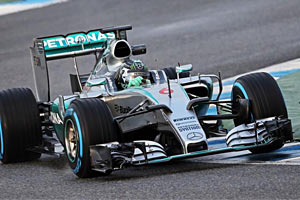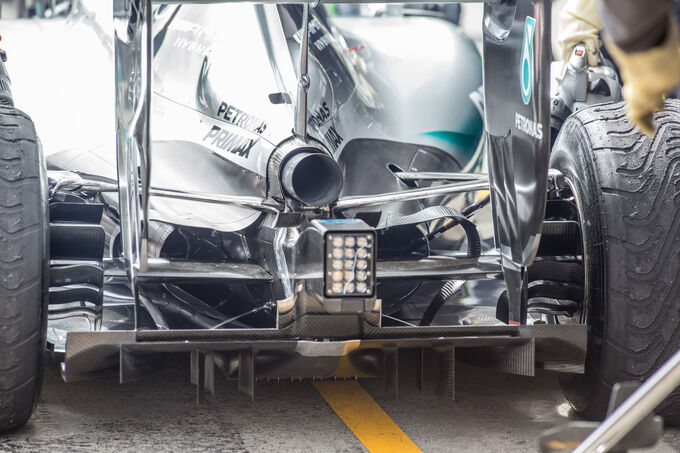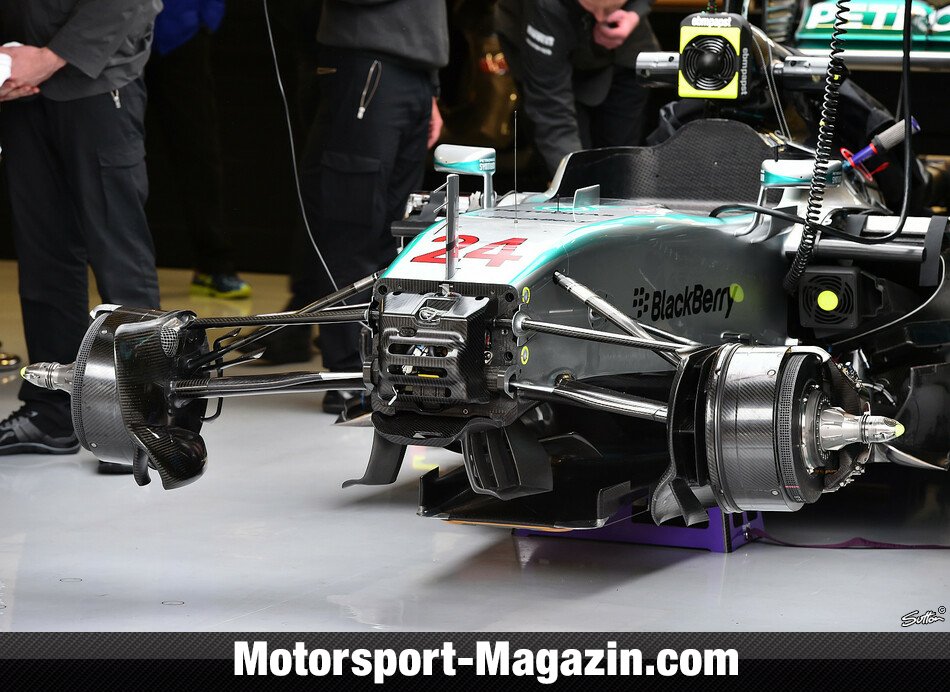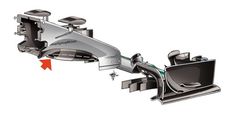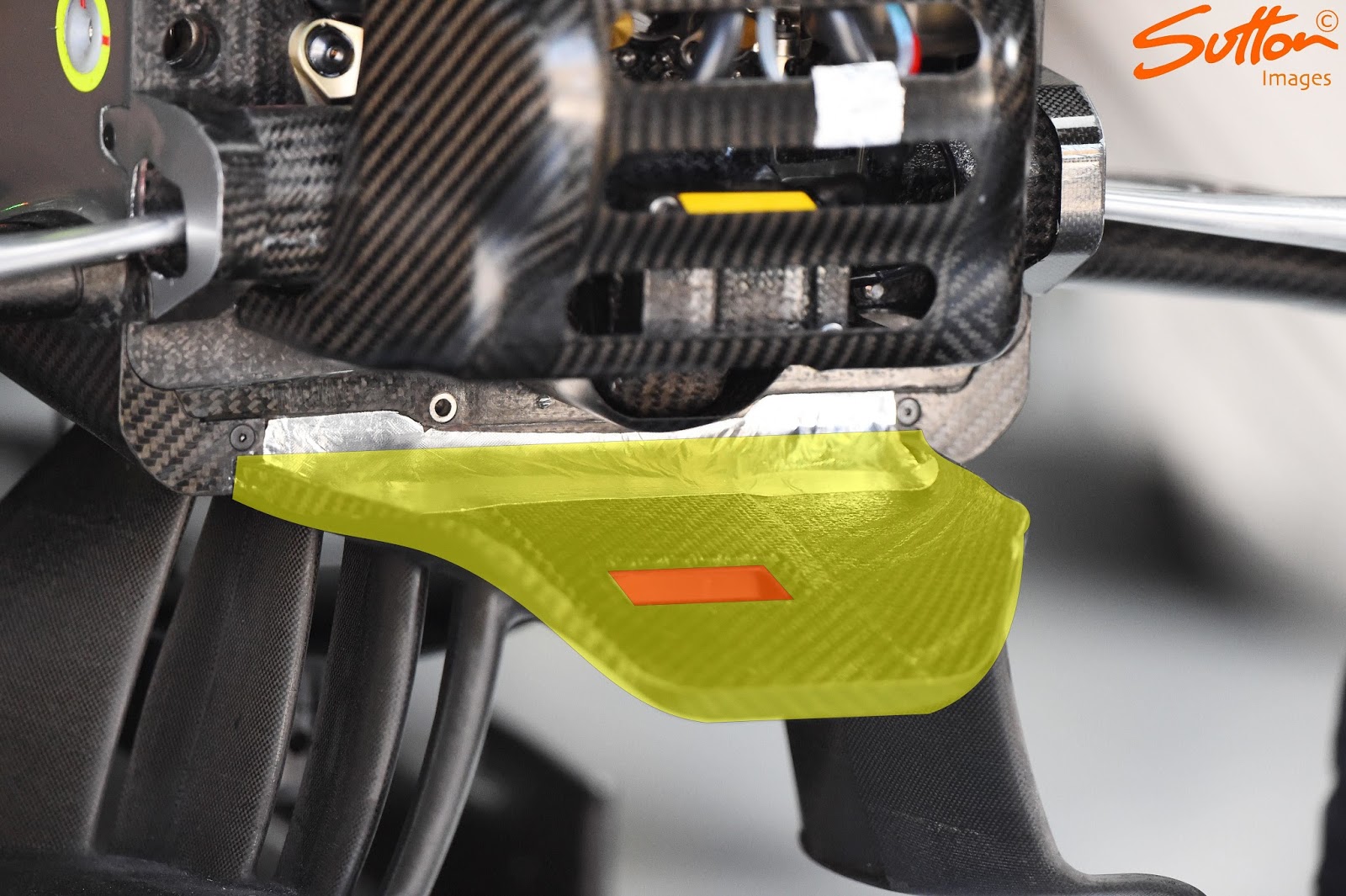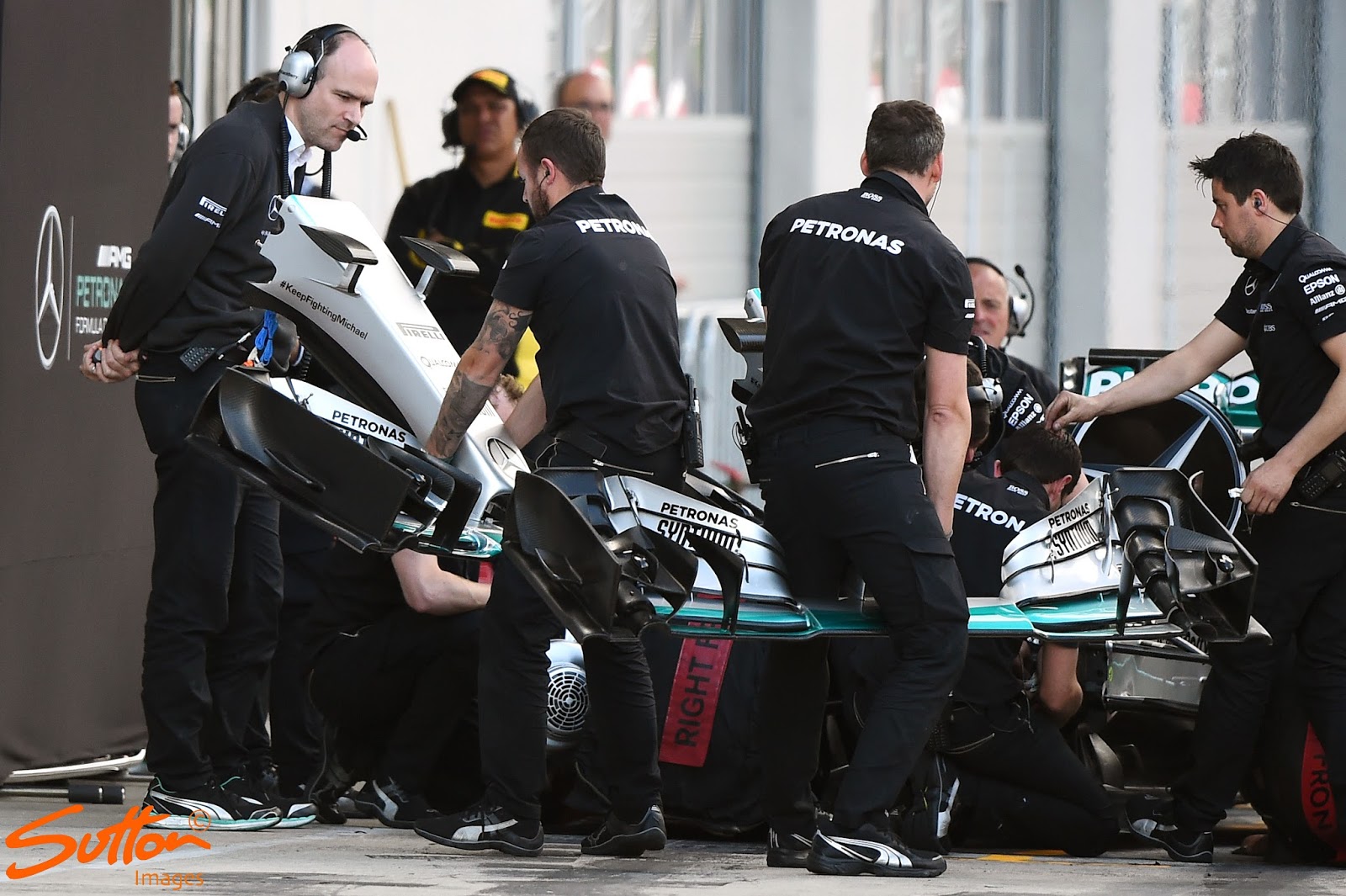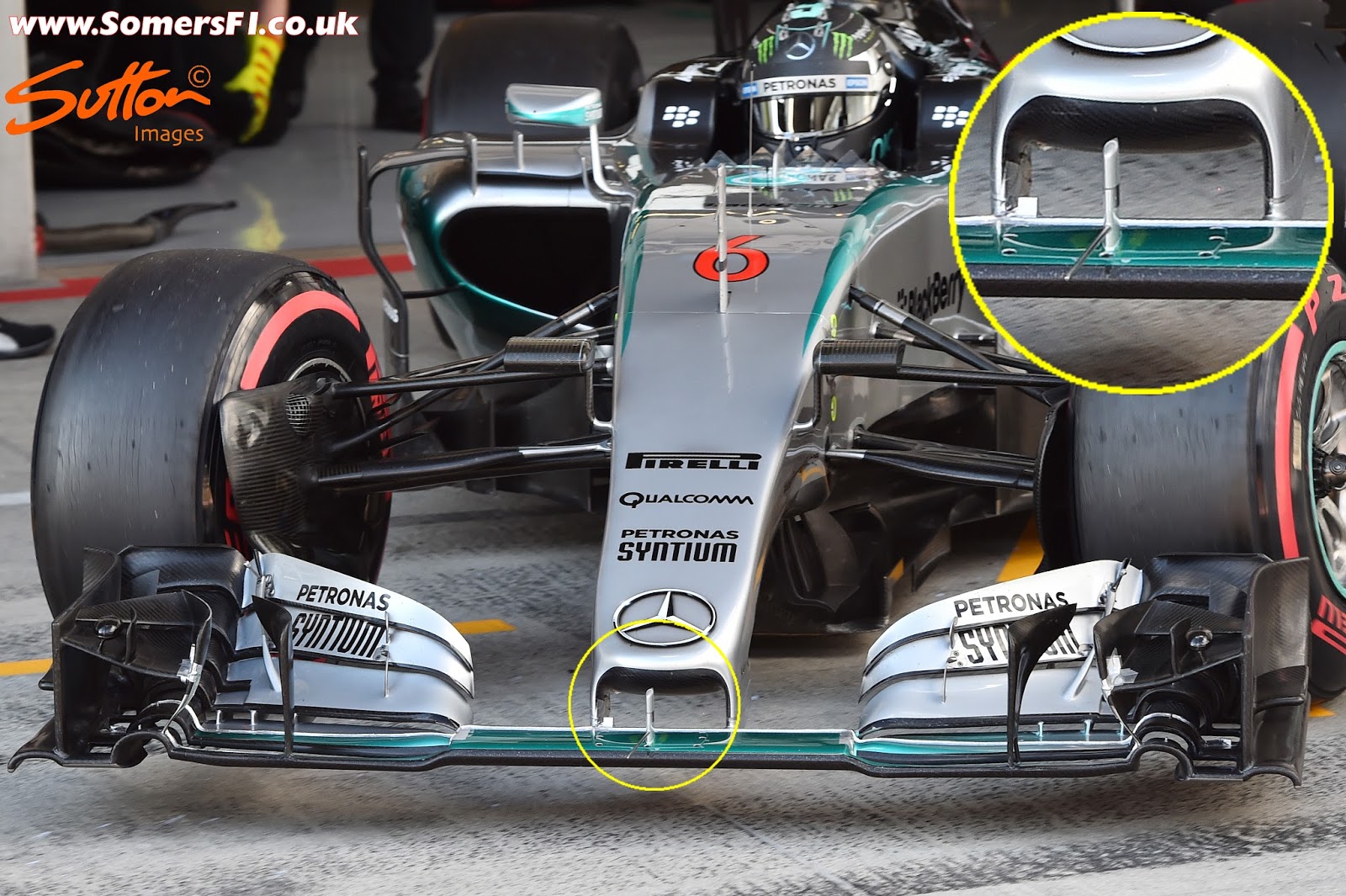Optical illusion on the pictures aside (there is certainly no S duct slot in any of them), I think it's better to ask the simple question: does Mercedes need an S-duct in the first place?
Let's rewind to 2012: new nose regulations forced teams to adopt the typical beak noses, a consequence of the front bulkhead having a higher maximum height then the nose. Most teams kept both structures on their respective maximum height, creating the sudden, agressive step in the transaction. This however created airflow seperation, inducing boundary layer buildup on top of the chassis. Before 2012, the transaction was flat and horizontal, which made sure no boundary layer buildup was present.
pre-2012 noses:
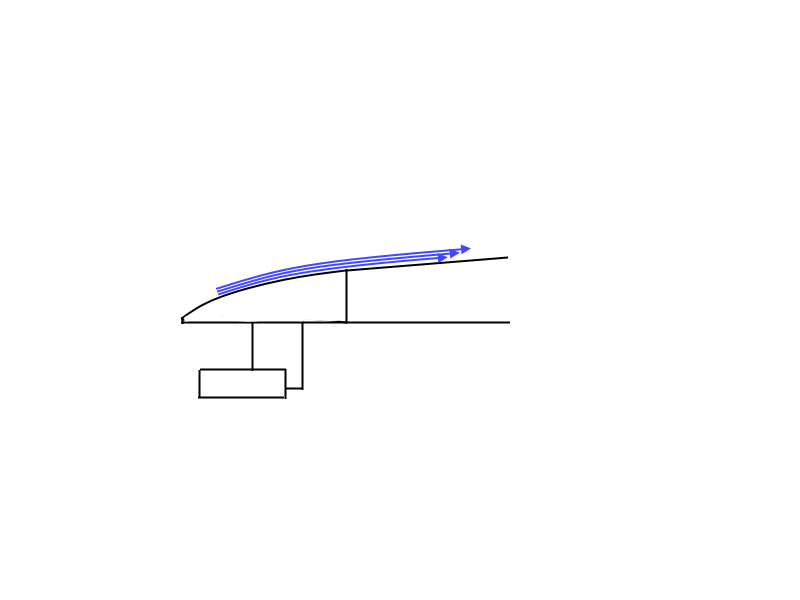 2012 noses:
2012 noses:
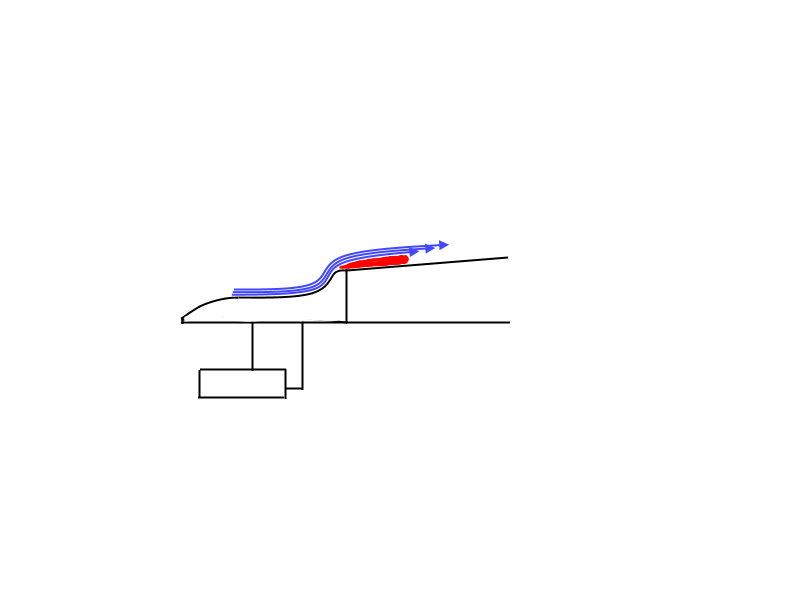
Sauber back then was the very first team to adapt the so called S-duct:
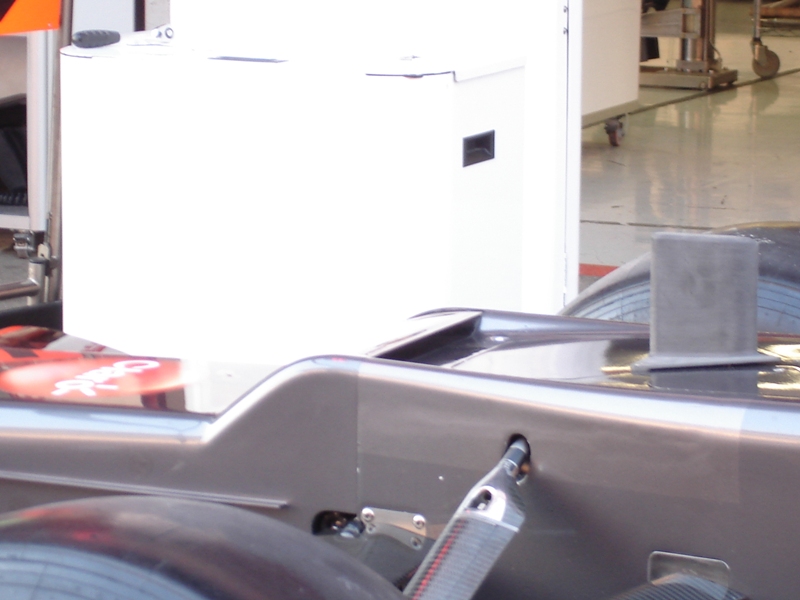
(
https://scarbsf1.wordpress.com/2012/03/ ... auber-c31/ , definitely read the rest of Scarb's article too!)
It works as a venturi tunnel, speeding up the airflow through the duct. It then gets near horizontally injected into the boundary layer, breaking it up. This reduces drag and all kinds of airflow issues downstream.
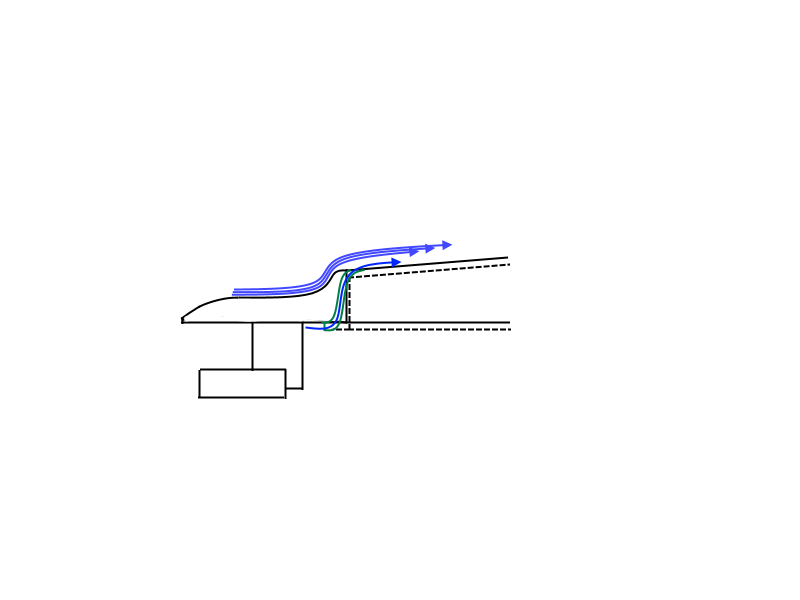
Coming into 2014 and especially, teams are actually faced with the same issue in a different package. Most teams still have their chassis quite high, this because it allows more airflow to the rear, but the nose tip has to be quite low. Performance wise, you don't want the nose tip to be that close to the neutral section of the wing. Most teams use a very short and very agressively sloping nose, which again causes airflow seperation issues with the end result of boundary layer buildup:
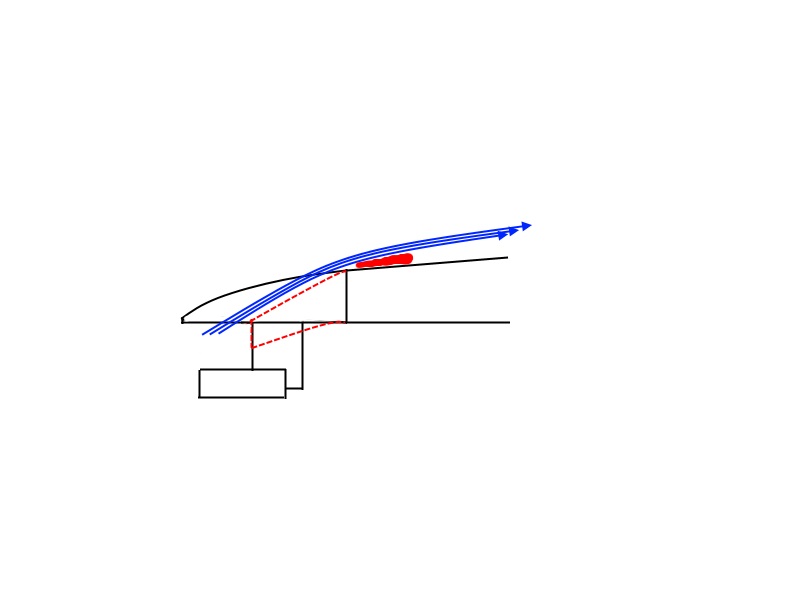
Which makes some of those teams generally use an S-duct to combat the issue. Note that a S-duct brings along its own issues. It requires space in the crash structure, which already is brought to its limit since those are nowadays so short. Since the crash structure will effectively be shortened, it needs to be reinforced to pass the crash test, which increases weight. It also requires front suspension dampers redesign.
However, teams like Lotus and Mercedes have a different approach:
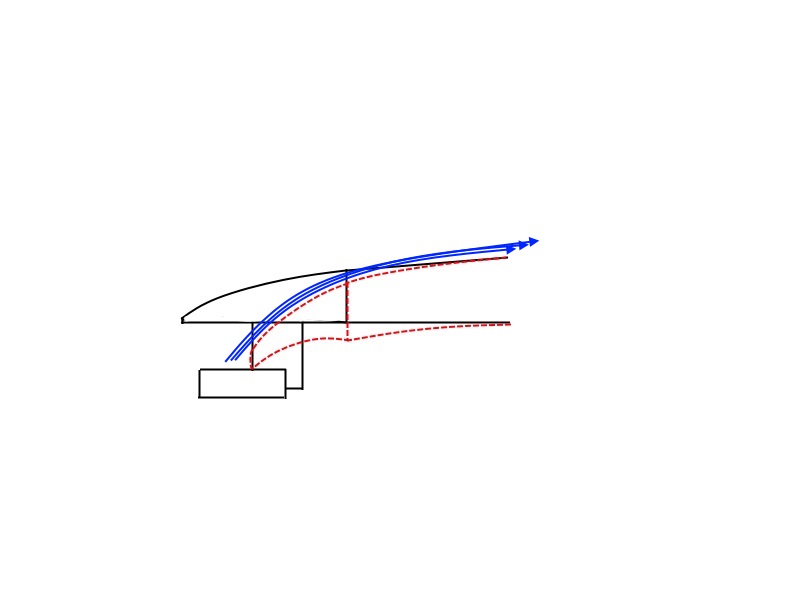
They angle the chassis downwards to reduce the overall slope angle of nose to a point the airflow does not seperate. The lower chassis is a downside to this, but it does mean they can reduce the crash structures dimensions and limit the weight. The much more gentle slope angle of the nose/chassis makes me believe they simply have no need for the S-duct.

